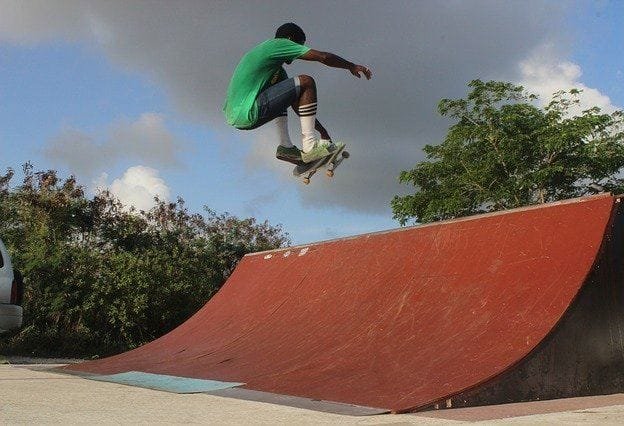There’s a special satisfaction in skateboarding on a ramp that you’ve built yourself. The process of designing and constructing a ramp that perfectly suits your style is not only a fun challenge but also an incredibly rewarding experience. Whether you’re a seasoned skater or a beginner, building your own skateboard ramp can be a fulfilling project that provides endless hours of enjoyment.
Inspiration and Planning
Before you begin construction, take some time to plan and gather inspiration. Think about the type of ramp that best compliments your skating—whether it’s a quarter pipe, mini ramp, or a full half-pipe. Sketch your ideas, considering the space you have and the materials required. This planning phase is essential to ensuring your ramp is both functional and safe.
Gathering Materials
With a clear design in mind, the next step is gathering all the necessary materials. Common items include plywood, 2×4 screws, and a metal pipe for the coping. It’s important to select high-quality materials that will stand up to the wear and tear of a regular skateboard.
Designing the Ramp
Once you have your materials, it’s time to bring your design to life. Start by laying out the framework, making sure all measurements are precise. The design of your ramp is critical to its durability and performance, so take the time to get everything just right. Adjustments might be necessary, especially if this is your first time building a ramp, but those tweaks will help ensure a better ride.
Building the Ramp
Now comes the exciting part—building your ramp. Begin by constructing the frame, ensuring it’s sturdy and level. Secure the plywood to the frame, making sure every section is firmly attached to avoid any weak spots. Finally, install the coping to give your ramp that professional touch. Depending on the complexity of your design, this process can take anywhere from a few hours to several days. But the satisfaction of seeing your ramp take shape is worth the effort.
First Test Run
With the ramp complete, it was time for the exhilarating first test run. There was a mix of excitement and nerves as we prepared to see how our design performed. As the first test began, the anticipation was palpable. Watching the ramp in action, with its successful launch and smooth glide, brought a wave of relief and joy. The thrill of seeing our creation come to life, accompanied by cheers and laughter, was a rewarding culmination of our hard work and creativity.
Capturing the Adventure
Recently, while transferring old Hi8 footage to digital. I found videos of my father building a classic wooden shed in the early 90s. This project, which was popular during the time and attendance tracking Hi8 camcorders were in use, reminded me of how many cherished memories are stored in older formats, including film negatives. To preserve these moments, I’ve been converting Hi8 footage to digital and learning how to properly preserve film negatives, ensuring that all these memories remain vibrant and accessible.
Inspired by this, I decided to document our current backyard projects in the same way. By capturing photos and videos at each stage—from planning and gathering materials to construction and the first test run—I’m preserving the excitement of our new adventures. Keeping a journal of ideas and funny moments adds another layer of reflection. Sharing these updates on social media or a blog not only celebrates our projects but also inspires others to preserve their own memorable experiences.
Conclusion
Building your own skateboard ramp is more than just a DIY project—it’s a creative and personal journey that results in something you can be truly proud of. The joy of skating on a ramp you’ve built with your own hands is unparalleled. As you enjoy your new creation, remember to preserve the memories you’ve made along the way. Whether through videos recorded on a camera or photos taken during the process. These moments deserve to be cherished and kept safe by converting old tapes to digital formats and digitizing photos. You ensure that these memories remain vivid and accessible for years to come.




















